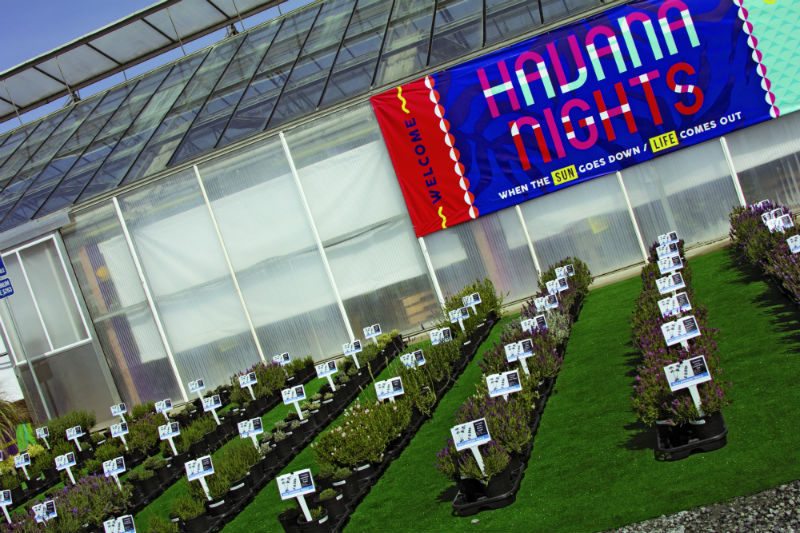
Comparing Lavandula
Lavandula was trialed 10 years ago in our 2006 comparison trial. Since then, there have been some major changes with so many new varieties being introduced, so it was time to revisit it. To make things difficult on ourselves, we decided to trial all types of lavender, from English, Spanish and French, to all types in between. We knew some of these types would not be in their full glory for Spring Trials, but this was a trial to collect data on this important genus, not to just be a showcase in one particular week.
The 2016 Spring Trials event took place April 9-14. Being that the earliest to bloom and easiest to get into early-date bloom are the Spanish types, these were at their peak and nearly past.
English types naturally come into bloom later than Spanish, between late spring and early summer, but we were seeing some blooms starting to show on a few early varieties in early April. The Lavadin types are the latest to bloom in the groups we trialed, so they did not actually start blooming until June.
Week 42 was targeted as the plant date for the trial to have enough time to bulk before winter conditions set in. Being in Watsonville, California, we can get away with this later fall planting date more than northern areas of the country. There were some varieties that were planted a bit later due to supply. This was taken into consideration when reviewing results, but the bulk of the trial was planted between weeks 42 and 45.
For a summarized list on plant dates, varieties and flowering times, go to: www.ppandl.net/files/ppl//Articles/LavenderComparisonTrials-PPL2016.pdf.
For a detailed summary of the trials, including photos, go to: www.ppandl.net/files/ppl//Articles/Lavender2016TrialResults.pdf.
Trial Conditions
All crops were planted into 2.5-quart pots using a 128-cell liner. Soil used was comprised of peat, perlite and bark, mixed with a slow-release fertilizer. All crops were grown outdoors in Watsonville, on the ground, in traditional perennial growing fields with overhead irrigation. Watsonville is known for its mild coastal climate, with day temperatures usually in the mid-60s to low 70s and night temperatures in the low to mid-50s.
In October 2015, at time of planting, we did have some warm days with temperatures getting into the 90s, but our night temperature still held in the mid-50s. November started cooling off a bit. By the end of the month, we had had our first freezing night temperatures with day temperatures in the mid-50s. These trends continued January through February. Then, we started to warm up a little for spring, which got us back to our average.
At the time of Spring Trials, week 15 of 2016, we were just below 13 hours of day length. This trial was also duplicated in the in-ground trial beds of the Smith Gardens site in Marysville, Washington. This was helpful in observing common varietal trends between the two locations.
Lavandula has been used since ancient times for its aromatic, medicinal and culinary qualities. For the nursery industry, lavender has moved beyond medicinal and culinary uses and has become an important garden perennial. In Europe, sales volume is in the millions of units per year, it is speculated that one in three perennials sold there are lavender. This is made possible by growers providing year-round product that consumers can use in the home and later move into the landscape. In the U.S., lavender is particularly important along the west coast, due to the mild and dry weather.
English Lavendar
Lavandula angustifolia, better known as English lavender, is the most valued lavandula species for oil production and is the top-selling lavender in the perennial market. English Lavender typically blooms late spring to early summer and generally needs, or benefits from, vernalization for best bloom power. That being said, breeders are furiously working on improved versions of angustifolia that need little to no vernalization.
These types of selections can flower earlier and more evenly than older varieties on the market when fall planted. In our trials, we found many of the older varieties on the market bloomed later, uneven or not at all. We attribute this to not getting enough chill hours in our mild climate and perhaps being more sensitive to needing size before chilling.
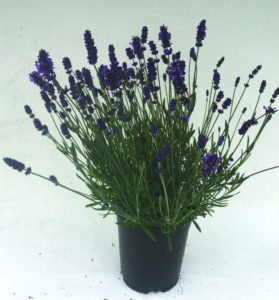
To get good bloom count on English Lavender, it is generally recommended to have 40+ leaf count before vernalizing. It is possible that some varieties need more maturity and hence more leaf count to bloom, while others do not seem to mind being a smaller size. In trialing the varieties from seed, we found overall crops to be more uneven in growth and flowering, compared to varieties from cutting. Growers should keep this in mind, as many want to save money on inputs, but this could come at a cost of having even row run crops.
Overall, the best varieties from seed were the Blue Scents from Syngenta and Ellagance from Kieft Seed. Both are touted as being first-year flowering, so this is likely why these produced fuller plants that flowered earlier. ‘Ellagance Purple’ bloomed earlier than ‘Blue Scent Improved’ and ‘Blue Scent Early’. However, the Ellagance series did not all bloom at the same time, with the Ice and Snow blooming five to six weeks later than the other colors. We also planted a few older varieties, including Hidcote and Munstead, from both seed and cutting. The material from seed never bloomed for us, while the material from cuttings grew very nicely. In fact, Hidcote from cutting was one of the best varieties of English in the trial. This finding suggests there could be a maturity issue for some varieties, but also the seeded versions were planted later than the rest of the trial, so they may not have had enough time to bulk before chilling.
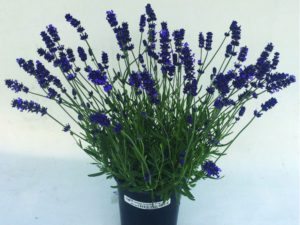
There were some clear winners in the varieties from cutting. For early flowering, we really were impressed with the new angustifolia breeding from Syngenta. These are still unnamed, as they finalize selections; both codes Blue 002 and Blue Light 003 bloomed very early, around week 14, and had very full habits with rich flower colors. Very close to these was ‘Super Blue’ from Darwin, blooming in week 15, also with a very nice and full habit. Moving into the mid to late season bloomers, best performers were ‘Aromatico Blue Improved’ and ‘Sentivia Blue’. Unfortunately, ‘Aromatico Blue Improved’ is not ready for market yet as it did not perform well worldwide. I know Syngenta is constantly working on improvements, so I am sure we will see a replacement very soon.
It is hard to ignore the fact that several varieties did not bloom in our trial. We have to think these varieties just needed more chill than our mild climate in Watsonville could provide. Not blooming is not always bad, the variegated variety ‘Platinum Blonde’ needs a hard vernalization to bloom, but with such stunning foliage, who will notice it does not have blooms?
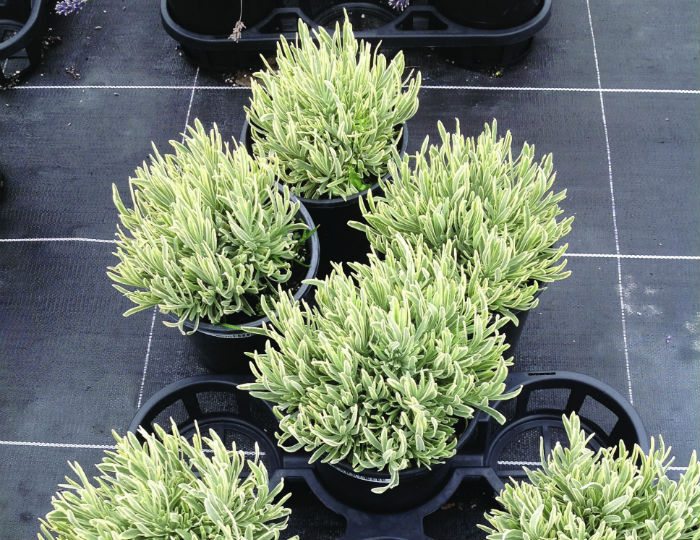
Spanish Lavendar
Lavandula stoechas is most often referred to as Spanish lavender in the United States, but it is also referred to as French Lavender, just to keep things interesting! Even more interesting is the fact that many of the cultivars on the market are actually hybrids with pedunculata spp. These are characterized by their long peduncles. The pedunculata blood also gives plants a more upright habit, which could be helpful in surviving wet conditions, as the foliage is not as dense. Varieties with pedunculata include the Ruffles series, Madrid series, Lusi series and The Princess series. There could be more out there; these are just the ones known to us.
Lavandula stoechas and hybrids thereof are fairly easy to grow. With no chilling requirement, they can be fall planted in areas like California, as these are not cold hardy, for early shipping crops and spring planted thereafter. There are so many offerings of this type, from many different breeders, so it can be hard to choose which suits your program best.
In our area, the winters can be foggy and wet, so it is important for us to choose varieties that can handle these conditions for fall planting. We find lavenders with a more open habit and less dense foliage are better during this time. In trial, there were noticeably small-sized varieties and large-sized varieties. Some had showy bracts, while others seemed to pale in comparison. Most of our trials looked the best in week 9. By week 15, for the Spring Trials event, they were a little past prime, with the exception of the Madrid series. This was due to the fact that the Madrid series was planted much later than the rest, due to supply availability.
To summarize our trial findings, we will look at the larger-sized varieties in the trial, starting with purple-colored flowers, as this is the most popular category. We found several great options, it was too difficult to choose one that was best overall.

In the Anouk series, there are many purple- flowering varieties, but we were most impressed with ‘Anouk Supreme’ for flower power and the larger flags. In the Ruffles series, Blueberry seems to be the most popular on the market, but in our trial, we really liked Sugarberry, even over Blueberry, as it was the more floriferous of the two. The Madrid series saw some upgrades this year, and we were very impressed with the New Madrids in both Blue and Purple. With a name like Little Bees, one would think these are small plants; they are more compact than some, but they are by no definition tiny. We were impressed with ‘Little Bee Purple’ for the large flags and rich color. Earliest to bloom for us in the stoechas and also with a rich purple color was ‘Giant Summer’, a great one to start the season off with. Last but not least, we think the one-off Margaret is one to try, as it had a bit more open habit, rich-colored flowers and did well in the in-ground trials.

Purple and blues are usually the top sellers in the Spanish Lavender category, since they are so eye- catching at retail. We did come across a few colors outside of this category that are worth looking at as well, which is good because I could not write an article and not mention pink flowers!
There were three varieties that really stood out in the pink range, as usually these tend to be very pale, baby pink and get lost in the sea of bright colors in stores. ‘Javelin Forte Deep Rose’, ‘New Madrid Rose’ and ‘The Princess’ had vivid, rich pink to rose colored flowers. These varieties should be considered when looking for color alternative. In our area, white-colored flowers tend to burn with the high light, so it is not a color I would recommend for high light areas, plus they really tend to get lost at retail.
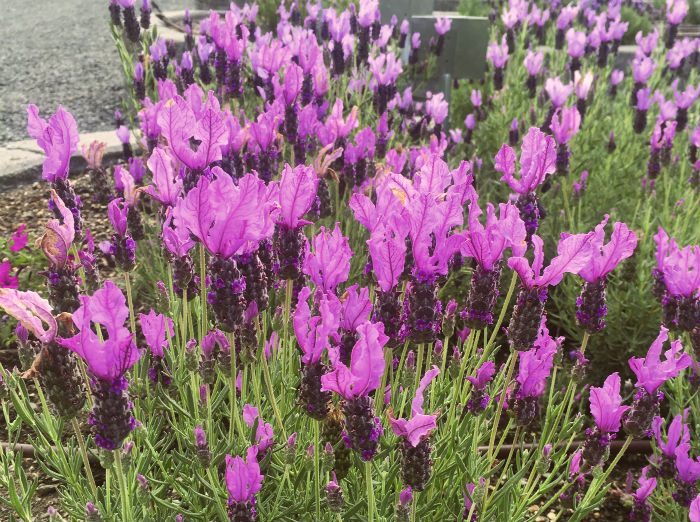
There were also varieties that had a much more open habit than all other stoechas. These included the Lusi series and ‘Voodoo Purple’. These could both be options to trial in areas with wet conditions or high humidity.
On the smaller side of things, we trialed a few varieties that would be an excellent addition to quart programs, such as the Luxurious, Bright Luxurious and the new LaVela series from Selecta. These can also be grown in 2.5 quarts. For savings on input cost, the new seeded ‘Bandera Purple’ from Kieft is a nice option. These smaller types all have dense foliage, so foliar diseases could become an issue if moisture levels are too high. To prevent this, growers should watch for overwatering.
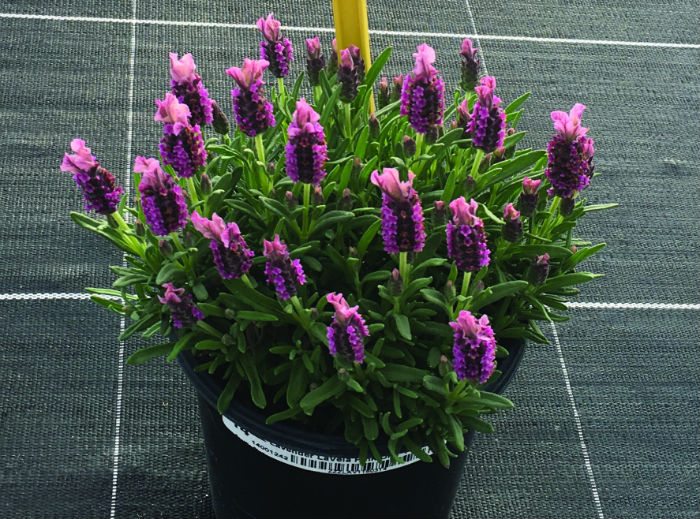

Lavadin Lavendar
Lavandula x intermedia, also known as Lavadin type, are used for oil production, just as the English lavender. The oils have a different composition, containing more camphor oils than the angustifolia spp. Also, Lavadin lavenders are generally larger plants, with longer flower stems that bloom later. In general, most of the varieties we trialed were roughly the same in appearance and performance. There was some difference in bloom time, with ‘Phenomenal’ blooming the latest for us, all of them starting in mid to late June. Flowering on the Lavadin types seemed a bit uneven, with ‘Fred Boutin’ looking the most even in flowering of the lot. This is most likely due to the need for higher chilling requirement than we are able to provide in Watsonville.
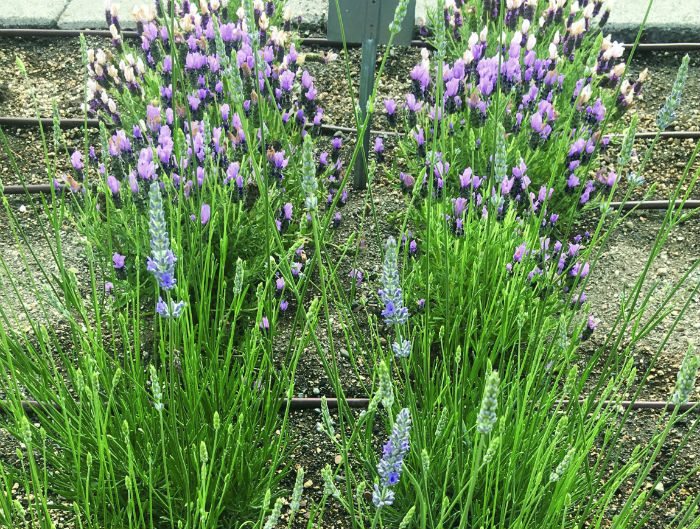
French Lavendar
French types are generally the Lavandula denata species. We trialed a few of these types, plus some hybrids of dentata. In general, these types do not grow well in our area over the winter and are prone to getting foliar disease, due to the daily fog we have, but we were very impressed with the performance of some hybrids. These were ‘Big Boy James’ and ‘Meerlo’. Both of these come from KiwiFlora of New Zealand and are dentata crossed with latifolia. They used to be classified as x allardii, but these hybrids in the Allardii group were recently reclassified as L. x heterophylla by Susyn Andrews and Tim Upson in the monograph “The Genus Lavandula.” In case you are up for learning everything you ever wanted to know about Lavandula, this is a great read!

Best in Show
Every trial needs a “best in show,” well at least we think so! There are so many great varieties out there and the breeding keeps improving upon them at a rapid pace. That said, we had to pick one winner. Our best in show was Lavandula x heterophylla ‘Meerlo’ for its overall uniqueness. ‘Meerlo’ is a sport of x heterophylla and was discovered by Louis Meerlo of Waiuku, New Zealand. ‘Meerlo’ has the typical toothed leaf margins like most denata, but the real magic is in the foliage, which is highly variegated. ‘Meerlo’ is a late bloomer, starting in July, but the foliage is the main attraction when it is not blooming, with bright cream-colored variegation that does not burn in full sun. ‘Meerlo’ is not hardy in most areas, but grows very quickly, so it can be used as a summer color item. ‘Meerlo’ is in the Sunset Western Garden Collection; for information on availability, please contact Plant Development Services Inc.
Being on the West Coast, lavender is an important crop for Pacific Plug & Liner. Trials like this provide us valuable information that we can pass along to our customers and help us to focus our offerings that we provide to the marketplace. For availability on any of the above mentioned varieties, please be sure to check our Liner-Bility tool that features 72 weeks of forecasted availability, located here: www.ppandl.net/avail-info/ppl%20availability.xlsx.


 Video Library
Video Library 




















